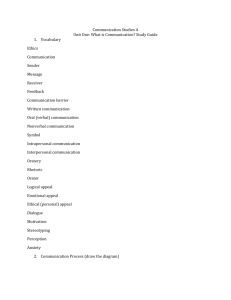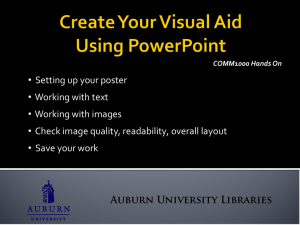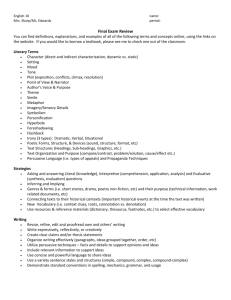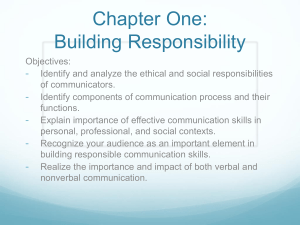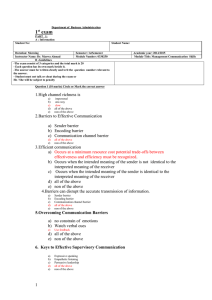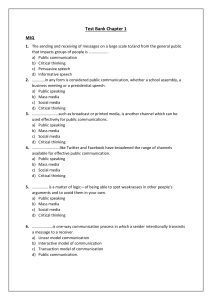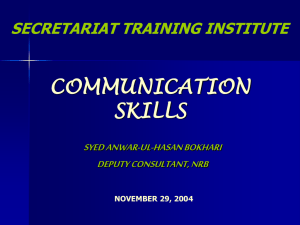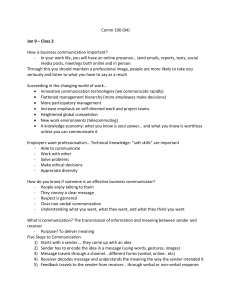SPEECH SPRING SEMESTER FINAL REVIEW These questions
advertisement
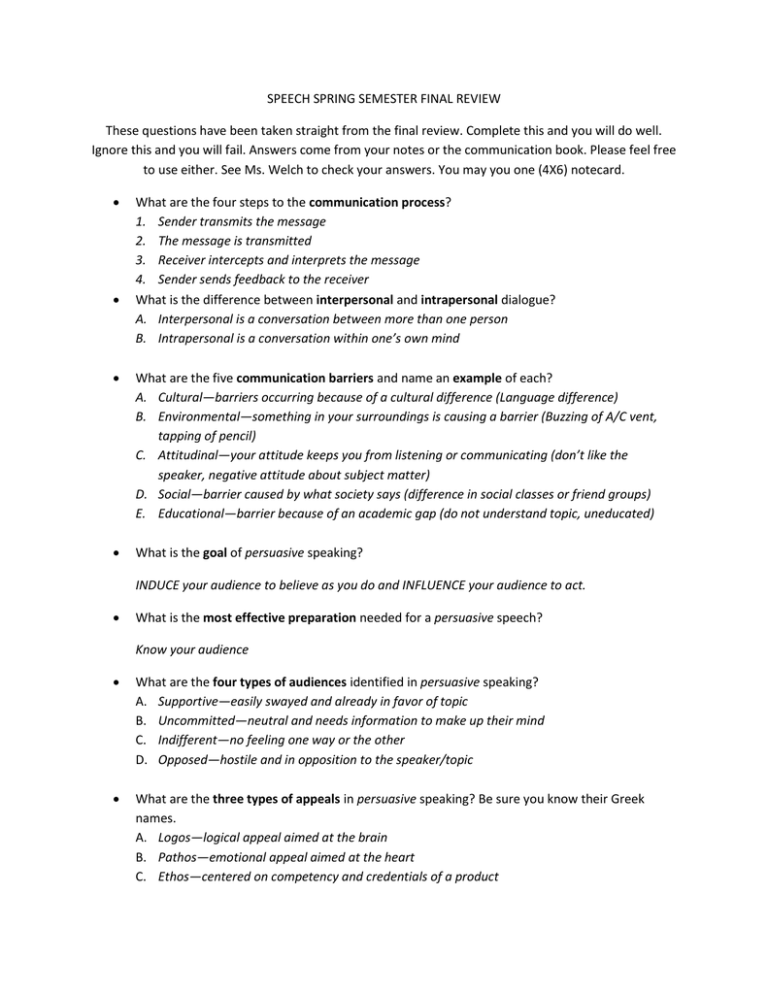
SPEECH SPRING SEMESTER FINAL REVIEW These questions have been taken straight from the final review. Complete this and you will do well. Ignore this and you will fail. Answers come from your notes or the communication book. Please feel free to use either. See Ms. Welch to check your answers. You may you one (4X6) notecard. What are the four steps to the communication process? 1. Sender transmits the message 2. The message is transmitted 3. Receiver intercepts and interprets the message 4. Sender sends feedback to the receiver What is the difference between interpersonal and intrapersonal dialogue? A. Interpersonal is a conversation between more than one person B. Intrapersonal is a conversation within one’s own mind What are the five communication barriers and name an example of each? A. Cultural—barriers occurring because of a cultural difference (Language difference) B. Environmental—something in your surroundings is causing a barrier (Buzzing of A/C vent, tapping of pencil) C. Attitudinal—your attitude keeps you from listening or communicating (don’t like the speaker, negative attitude about subject matter) D. Social—barrier caused by what society says (difference in social classes or friend groups) E. Educational—barrier because of an academic gap (do not understand topic, uneducated) What is the goal of persuasive speaking? INDUCE your audience to believe as you do and INFLUENCE your audience to act. What is the most effective preparation needed for a persuasive speech? Know your audience What are the four types of audiences identified in persuasive speaking? A. Supportive—easily swayed and already in favor of topic B. Uncommitted—neutral and needs information to make up their mind C. Indifferent—no feeling one way or the other D. Opposed—hostile and in opposition to the speaker/topic What are the three types of appeals in persuasive speaking? Be sure you know their Greek names. A. Logos—logical appeal aimed at the brain B. Pathos—emotional appeal aimed at the heart C. Ethos—centered on competency and credentials of a product Define the following Oral Interpretation terms: A. Persona—a narrator of a story B. Mood—the emotional tone that predominates the selection C. First Person—a story in which the narrator uses “I” D. Third Person—an author moves freely into and out of the minds of the characters What are the three things you should consider when selecting material for interpretation? 1. A work you enjoy 2. The quality of work 3. The occasion and desires of your audience Other Tips & Tricks: There will be 55 vocabulary words from Sets #1-6. Be sure you can identify the definition for each word. If you were not here all year and do not have the vocabulary terms, please see me and I will get you a list of the words you need to know. Be able to identify each part of speech: nouns, verbs, adjectives, adverbs, and prepositions Know how to properly spell and use the following words from our Using the Right Word work: o Peak/Peek: o Pane/Pain: o You’re/Your: o Lie/Lay: o Who’s/Whose: o Passed/Past: o Chord/Cord: o Quiet/Quite: o Where/Wear: o Sore/Soar:



